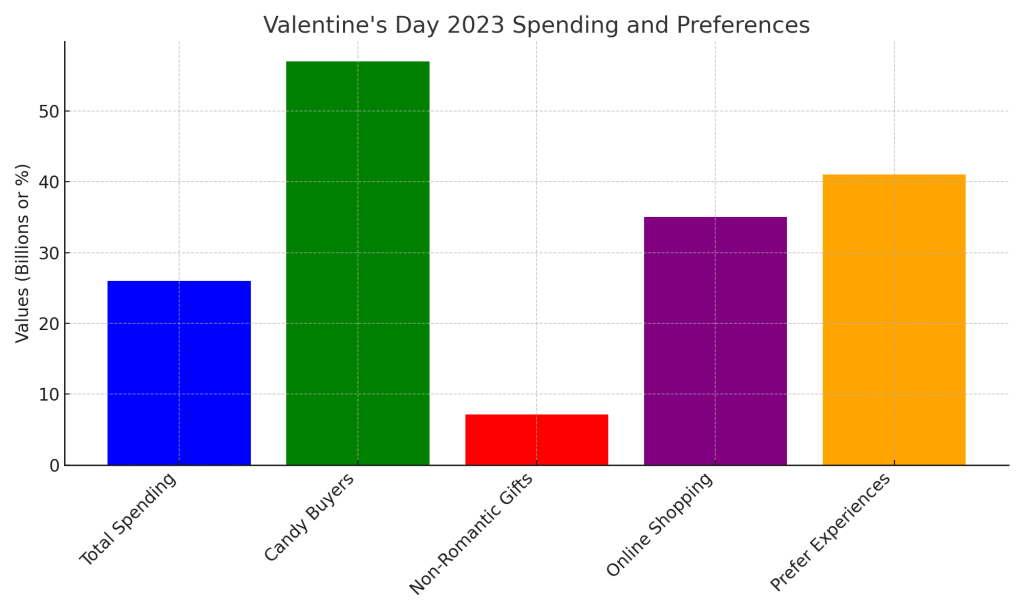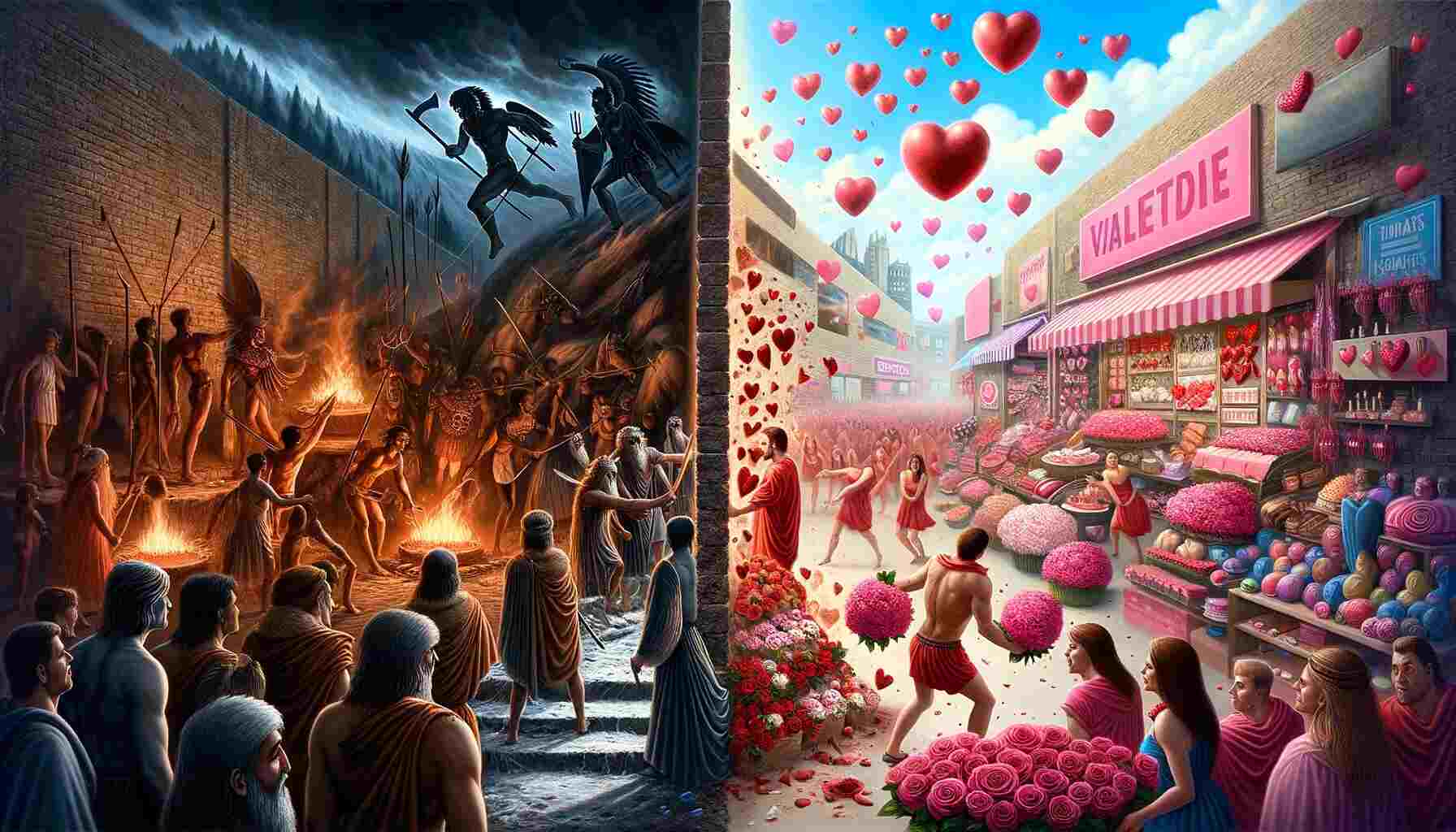Valentine’s Day, celebrated on February 14th each year, is often hailed as a day of love, romance, and affection. Couples exchange gifts, indulge in romantic dinners, and express their feelings for one another. However, beneath the surface of this seemingly innocent holiday lies a darker truth that often goes unnoticed.
Origins of Valentine’s Day
Valentine’s Day traces its roots back to ancient Rome, where it was initially observed as a pagan fertility festival known as Lupercalia. During this festival, which took place in mid-February, men would sacrifice animals and then whip women with the hides of the animals they had just slain. This ritual was believed to promote fertility and ward off evil spirits.
The holiday underwent Christianization in the 5th century when Pope Gelasius I declared February 14th as St. Valentine’s Day, honoring one or more early Christian martyrs named Valentine. However, the connection between St. Valentine and romantic love was not established until much later, during the Middle Ages.
Commercialization of Valentine’s Day
Today, Valentine’s Day has become highly commercialized, with retailers capitalizing on the celebration of love to boost sales of flowers, chocolates, greeting cards, and other gifts. According to the National Retail Federation, Americans collectively spend billions of dollars each year on Valentine’s Day gifts and celebrations.
This commercialization has led to a commodification of love, where the value of a relationship is often measured by the material gifts exchanged on this day. Additionally, the pressure to participate in Valentine’s Day festivities can be overwhelming for both singles and couples alike, fostering feelings of inadequacy and loneliness in those who are not in romantic relationships.

Valentine’s Day Spending Statistics
- Valentine’s Day Spending Recovery: In 2023, US consumers spent an estimated $26 billion on Valentine’s Day, indicating an 8.37% increase from the previous year. This surge in spending suggests a strong post-pandemic recovery in consumer behavior related to the holiday.
- Popularity of Candy as a Gift: Candy remained the most popular Valentine’s Day gift, with 57% of shoppers opting for sweets. This trend continues from 2022, highlighting candy’s enduring appeal in Valentine’s gifting.
- Rise of Non-Romantic Gifts: In a notable shift, $7.1 billion was spent on non-romantic gifts for acquaintances such as teachers and co-workers in 2023. Additionally, a record 32% of consumers purchased Valentine’s gifts for their pets, reflecting the broadening scope of Valentine’s Day gifting.
- Preference for Online Shopping: E-commerce was the preferred shopping venue for Valentine’s Day in 2023, with 35% of purchases made online. This trend surpasses traditional shopping venues like department stores, discount stores, and local businesses.
- Desire for Experiential Gifts: Many consumers expressed a preference for experiential gifts over material items for Valentine’s Day. Specifically, 41% of gift recipients preferred experiences, and 32% of shoppers planned to purchase an experiential gift, indicating a significant interest in creating memorable moments rather than exchanging tangible goods.
These statistics from Fit Small Business provide a comprehensive overview of the evolving trends in Valentine’s Day spending and consumer preferences, highlighting the holiday’s commercial impact and the shifting dynamics of gift-giving.
Societal Pressures and Expectations
Valentine’s Day can exacerbate societal pressures and expectations surrounding romance and relationships. Singles may feel marginalized or stigmatized by the emphasis placed on romantic partnerships, while those in relationships may feel pressure to meet unrealistic standards of romance and extravagance.
Furthermore, the celebration of Valentine’s Day can perpetuate harmful gender stereotypes, reinforcing traditional notions of masculinity and femininity. Women are often portrayed as passive recipients of romantic gestures, while men are expected to be the initiators and providers of affectionate displays.
Alternative Perspectives and Practices
Despite its commercialized and often superficial nature, Valentine’s Day does not have to conform to conventional standards of romance. Many individuals and couples choose to celebrate the day in more meaningful and authentic ways, such as through acts of kindness, quality time spent together, or expressions of gratitude and appreciation.
Others embrace alternative perspectives by reclaiming Valentine’s Day as a day of self-love and self-care, emphasizing the importance of nurturing oneself and cultivating a healthy relationship with oneself before seeking validation from others.
Valentine’s Day Traditions Around the World
Valentine’s Day, celebrated on February 14th, is known worldwide as a day to celebrate love and affection between intimate partners. Traditions vary from country to country, reflecting diverse cultural interpretations of love and ways of celebrating it. Here’s a look at some unique Valentine’s Day traditions across the globe:
United States
In the US, Valentine’s Day is celebrated with the exchange of cards, chocolates, flowers, and gifts between loved ones. It’s also common for couples to go out for romantic dinners or spend quality time together.
Japan
In Japan, Valentine’s Day has a unique twist where women give chocolates to men. There are two types of chocolates: “Giri-choco” (obligation chocolate), given to male friends, colleagues, and bosses, and “Honmei-choco” (true love chocolate), given to boyfriends, lovers, or husbands. Interestingly, there’s a follow-up to Valentine’s Day called “White Day” on March 14th, when men who received chocolates are expected to return the favor by giving gifts, often more expensive, to the women.
South Korea
In addition to Valentine’s Day and White Day, South Korea has taken the concept even further with the introduction of “Black Day” on April 14th. On this day, singles who did not receive any gifts on Valentine’s Day or White Day gather to eat Jajangmyeon, black bean paste noodles, as a form of consolation and to celebrate their single status.
Wales
Wales celebrates its day of love, “Dydd Santes Dwynwen,” on January 25th, in honor of Dwynwen, the Welsh patron saint of lovers. The traditional gift is a carved wooden spoon, known as a “lovespoon,” dating back to the 17th century. These spoons are intricately designed and symbolize different meanings based on the patterns carved into them.
Argentina
Argentines take a week-long celebration to love called “Sweetness Week” in July. During this period, couples exchange kisses for sweets. It’s a time when love and affection are expressed not just on a single day, but over several days, culminating in “Friendship Day.”
Philippines
In the Philippines, Valentine’s Day is a time for grand romantic gestures and mass wedding ceremonies. It’s not uncommon for hundreds of couples to gather in malls or other public places to get married or renew their vows together, creating a community celebration of love.
Italy
Originally, Italians celebrated Valentine’s Day as their Spring Festival. Young couples would spend the day in gardens enjoying poetry readings and music before the modern-day version took over. A popular gift among lovers in Italy is Baci Perugina, a chocolate-covered hazelnut filled with a cherry and a slip of paper with a romantic quote in four languages.
Brazil
Brazilians skip the February 14th celebration in favor of “Dia dos Namorados” (Lovers’ Day) on June 12th, due to its proximity to Carnival. Similar to Valentine’s Day, it involves the exchange of chocolates, flowers, and cards. The day after, June 13th, is dedicated to Saint Anthony, the patron saint of marriage, where single women perform rituals, known as “simpatias,” in hopes of finding a husband.
United Kingdom
British tradition includes sending Valentine’s Day cards, often anonymously, to express affection. Additionally, couples may exchange gifts and enjoy romantic dinners.
France
Considered one of the most romantic countries, France has a historical Valentine’s Day tradition where women and men would fill houses that faced one another, and then take turns calling out to one another and pairing off. However, if a man was dissatisfied with his match, he could leave her for another. Unmatched women would later gather for a ceremonial bonfire where they would burn images of the men who wronged them, a practice that was eventually banned by the French government.
Ghana
Ghana, known as one of the world’s largest cocoa producers, celebrates February 14th as “National Chocolate Day.” It’s a government initiative to increase tourism and the consumption of Ghanaian chocolate. Couples and friends celebrate by giving chocolate as gifts, and there are also exhibitions, music events, and restaurants that participate by offering special menus.
Each of these traditions reflects the diverse ways love is celebrated around the world, adapting Valentine’s Day to fit local customs and cultural heritage. Whether through gifts of chocolate, spoons, or collective ceremonies, the essence of Valentine’s Day – celebrating love and affection – remains universal.
Conclusion
In conclusion, while Valentine’s Day may be synonymous with love and romance for many, it is essential to recognize the darker truths that lurk beneath the surface of this seemingly innocuous holiday. From its pagan origins to its modern-day commercialization and societal pressures, Valentine’s Day carries a complex history and significance that extends beyond roses and romance.










